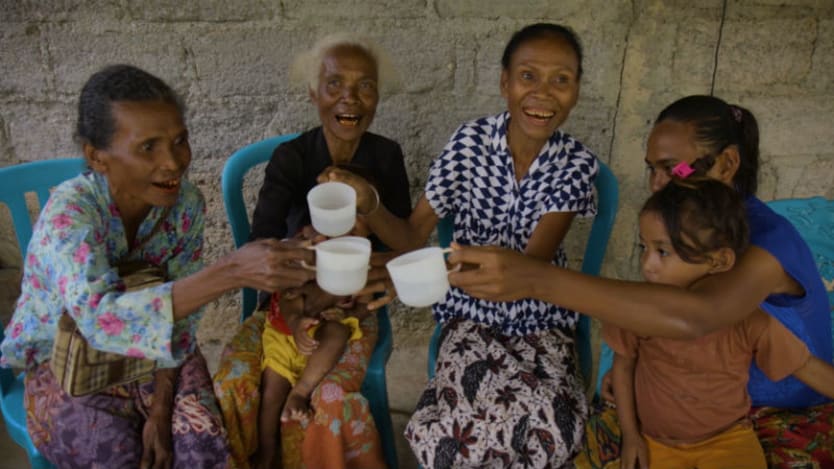
In 2019, the inclusion imperative set by the 2030 agenda for sustainable development is well known. International development actors have heard the message loud and clear from disability advocates and their allies: The agenda will fail in its mission to leave no one behind if the estimated 20 percent of the world’s poorest people who have a disability are not included in implementation.
But many development actors still lack the knowledge or experience to implement disability inclusive programs. Over the past 10 years, CBM has stood alongside the disability movement and has partnered with actors including the Australian government, multilaterals, private sector organizations, and other international NGOs to advocate and provide tangible, "how to” advice to drive systemic change.
“It is important to work toward a mutual vision for change, not co-opt the disability movement into the priorities of development agencies.”
—From our experience, here are some key lessons to help take “leave no one behind” from principles to practice in development programs and policy.
1. Use a rights-based approach to guide implementation of the 2030 agenda
The Convention on the Rights of Persons with Disabilities obligates ratifying governments to ensure the human rights of people with disabilities are considered in national development frameworks, policy, and legislation; international development cooperation; and humanitarian action. This means the CRPD and 2030 agenda intersect in multiple areas.
The first 10 articles of CRPD provide minimum standards and principles for disability inclusion across sectors and other articles address specific sectors, often addressing areas where rights violations have historically occurred. For example, Article 25 specifies the need for free and informed consent for all health services instead of involuntary treatments that are still common. Article 13 sets out the need for procedural adjustments to allow for effective participation of people with disabilities in judicial proceedings — a new concept for many countries. Importantly, CRPD was developed — and is endorsed and monitored — by people with disabilities and their representative organizations.
2. Ensure the disability movement is at the heart of change
People with disabilities and their representative organizations are experts of their own experience. They are best-placed to identify barriers to inclusion, propose new ideas, and advise on accessibility and reasonable accommodation requirements. We value this expertise and embed it into our work and our partnerships — active engagement with the disability movement is a nonnegotiable part of our approach. We endeavor to open up spaces for dialogue between government, development actors, and the disability movement.
Devex’s Development Enabled series
Development Enabled explores the daily challenges of people with disabilities, while looking at solutions on how to support a disability-inclusive world.
CBM provided advisory support to five WASH programs under the Australian Department of Foreign Affairs and Trade-funded civil society WASH program from 2013-2018. In each case, we brokered partnerships between the implementers and local organizations for people with disabilities, known as DPOs, to facilitate more inclusive WASH implementation and to yield value for both partners.
In some cases, DPOs co-implemented activities such as community awareness raising, infrastructure accessibility audits, and data collection. In other cases, DPOs played an advisory role such as monitoring implementation.
Through this approach, DPOs brought local knowledge, networks, and context, and CBM brought sectoral, program, and technical expertise. This ensured inclusive WASH approaches took into account structural as well as social barriers. In the next phase of DFAT’s civil society WASH funding, Water for Women, DPO engagement is complemented by stronger collaboration at the grassroots level via self-help groups.
3. Work collaboratively to drive an agenda for change
Whole-of-sector transformation demands combined approaches to policy, advocacy, and programs that channel efforts toward a unified, inclusive goal. Coalitions and partnerships allow for broader influence and bring together a variety of expertise.
When working with people with disabilities and their representative organizations, recognize that these people and organizations have their own agendas for influence and change. It is important to work toward a mutual vision, not co-opt the disability movement into the priorities of development agencies. CBM commits to engage with DPOs in mutually beneficial ways, and we support our advisory partners to do the same.
A core part of this approach is that people with disabilities are paid for their contributions like any other experts. We need to contribute to disability rights organizations’ core and operational costs and ensure that we don’t unintentionally divert attention from their own priorities in our efforts to leave no one behind. Real partnerships, which are not transactional in nature, are fundamental for impactful collaboration.

4. Be intentional about embedding inclusion into all programs
To achieve change, development actors must embed disability-inclusive approaches into their work, regardless of the primary sectoral focus. More equal, inclusive, and accessible mainstream development programs yield great outcomes for people with disabilities and their families but also for other under-represented or marginalized groups.
More from Development Enabled:
► Q&A: A 'twin-track' approach to disability-inclusive disaster preparedness
► For children with disabilities in Nigeria, educational opportunities remain scant
►Supporting disability advocacy: Insights from Savina Nongebatu
Designing programs, services, and infrastructure for a diverse range of people — including those with different impairments — results in far more inclusive environments from which everyone benefits. Using a range of modalities to communicate is more effective and it ensures people with sensory and reading disabilities don’t miss out. Improving physical access with ramps clearly benefits people with physical impairments, but also assists older people, children, and pregnant women. Understanding these barriers is fundamental for designing programs, drafting policy, or developing organizations that put the leave no one behind agenda into action.
5. Foster inclusion in your own organization
Effective inclusion must become recognized as an essential component of good development practice because it needs ongoing attention and action. It will only be achieved by organizations that are open to change and that themselves practice inclusion.
Inclusive organizations:
• Recognize and value diversity in employees and partners, and support accessibility and reasonable accommodation in the workplace.
• Have senior leaders committed to inclusion and champions at all levels. Active champions can facilitate frank discussions, drive honest organizational self-assessments, and advocate internally and externally.
• Make decisions based on good data. This helps people to understand who they work with and who is excluded, to think about inclusion in mainstream settings, and to design and implement programs that uphold the rights of all people in the community.
Toward 2030
In placing "leave no one behind” at the heart of the 2030 agenda, governments have set a deadline for full inclusion. Three years into implementation, development actors should have stepped beyond understanding the need to uphold the rights of people with disabilities and must be putting this objective into operation.
Time is of the essence if we are to reach our collective targets. When 2030 arrives, CBM hopes that we and our partners will be standing alongside all people with disabilities in a more equal and inclusive future.





